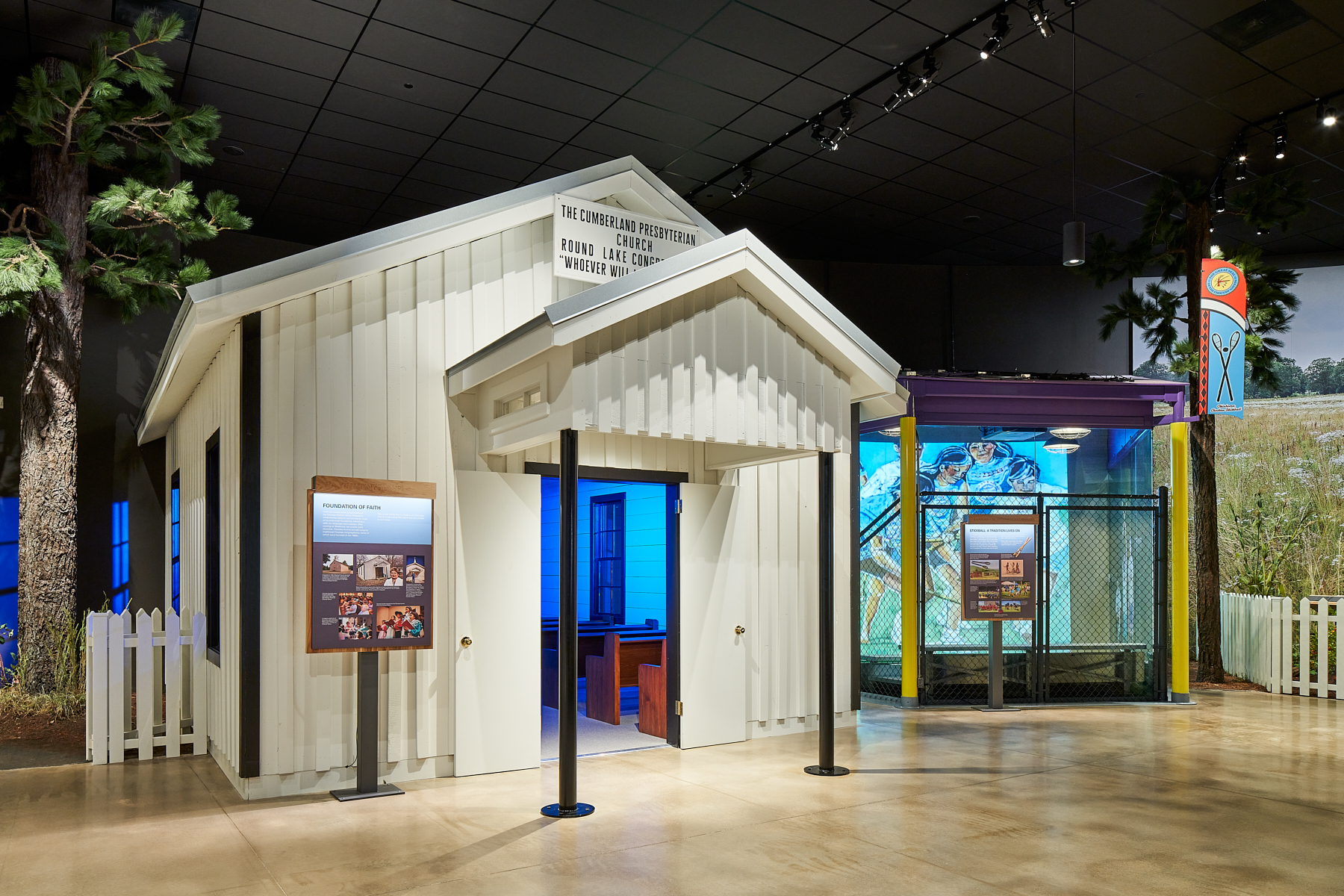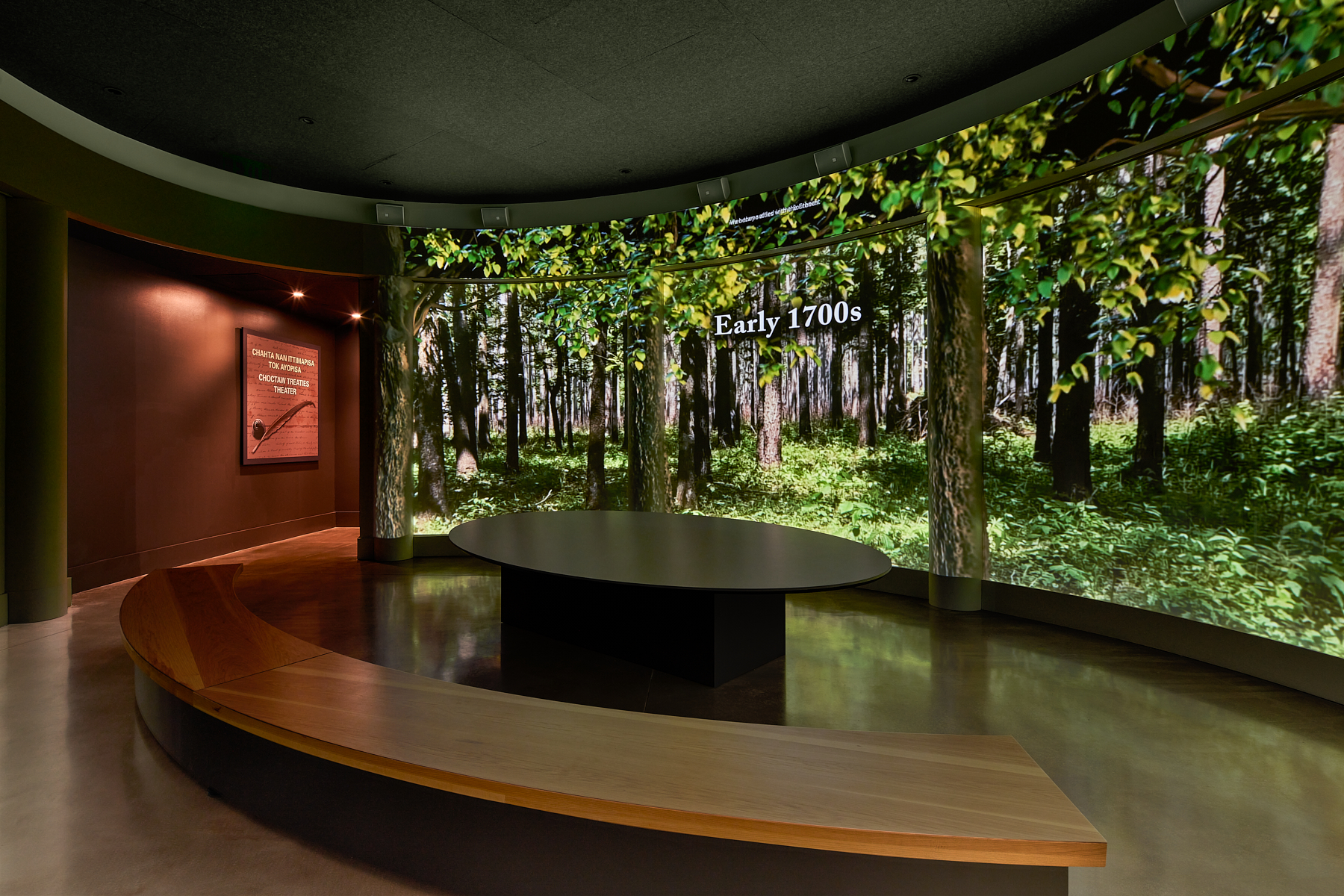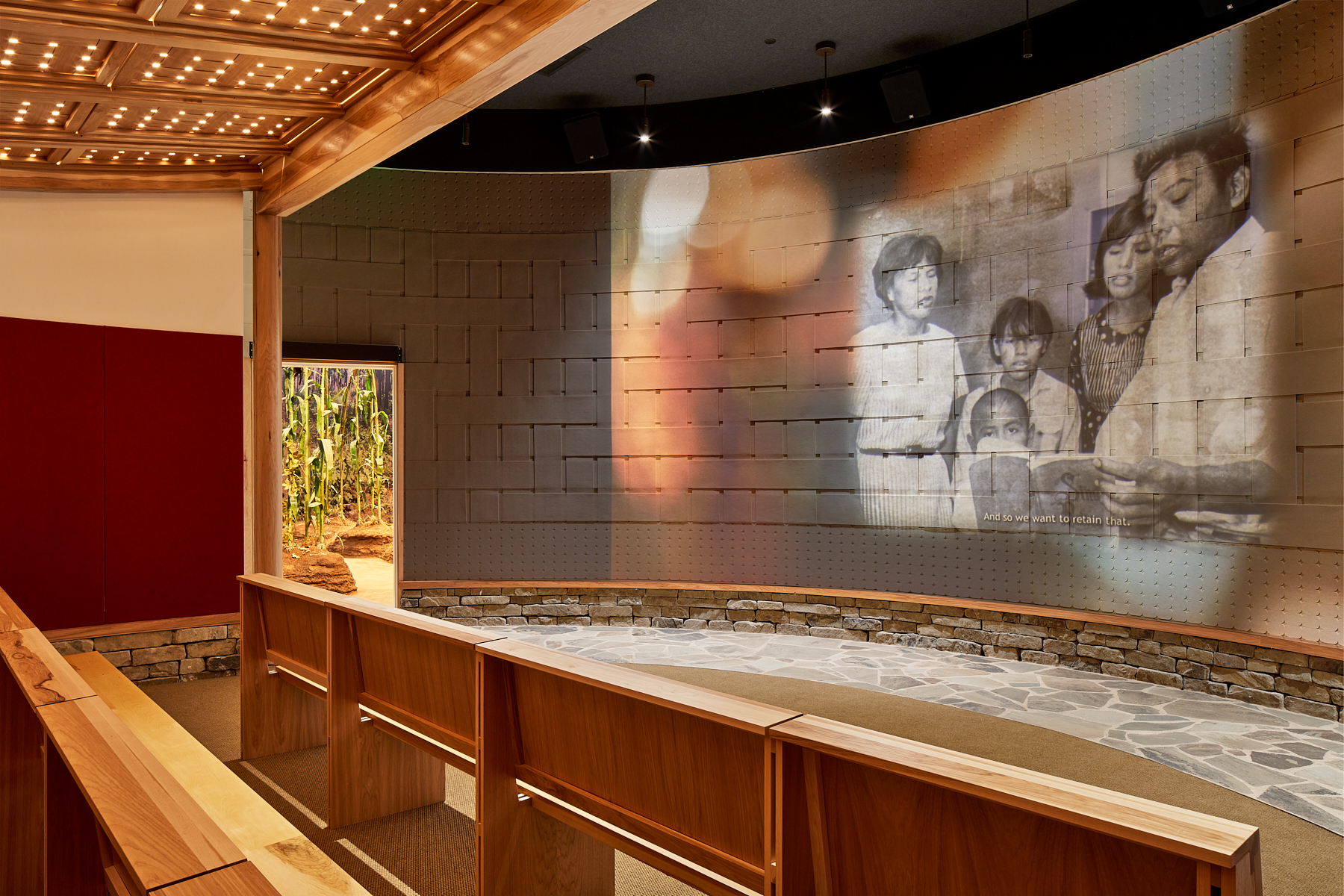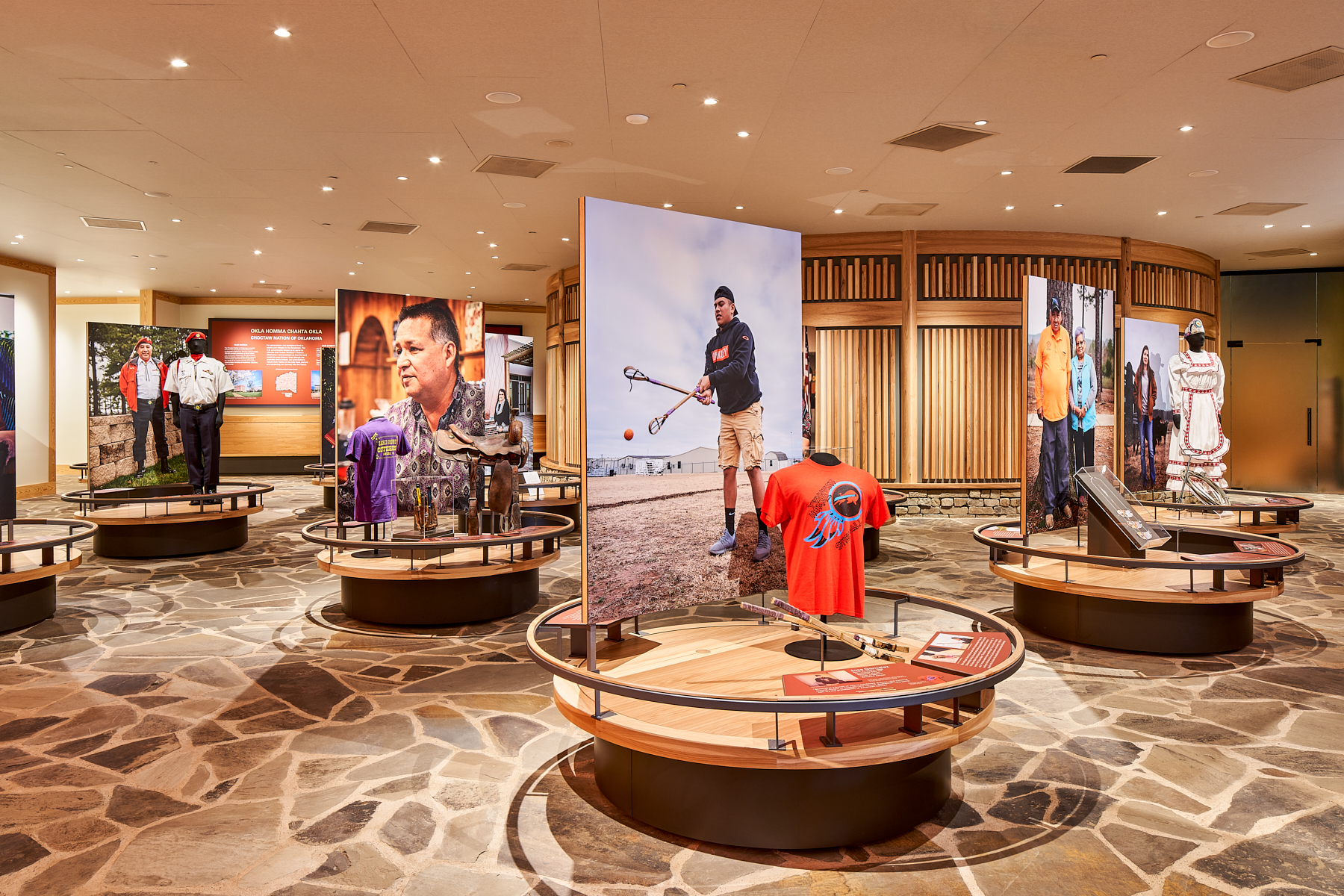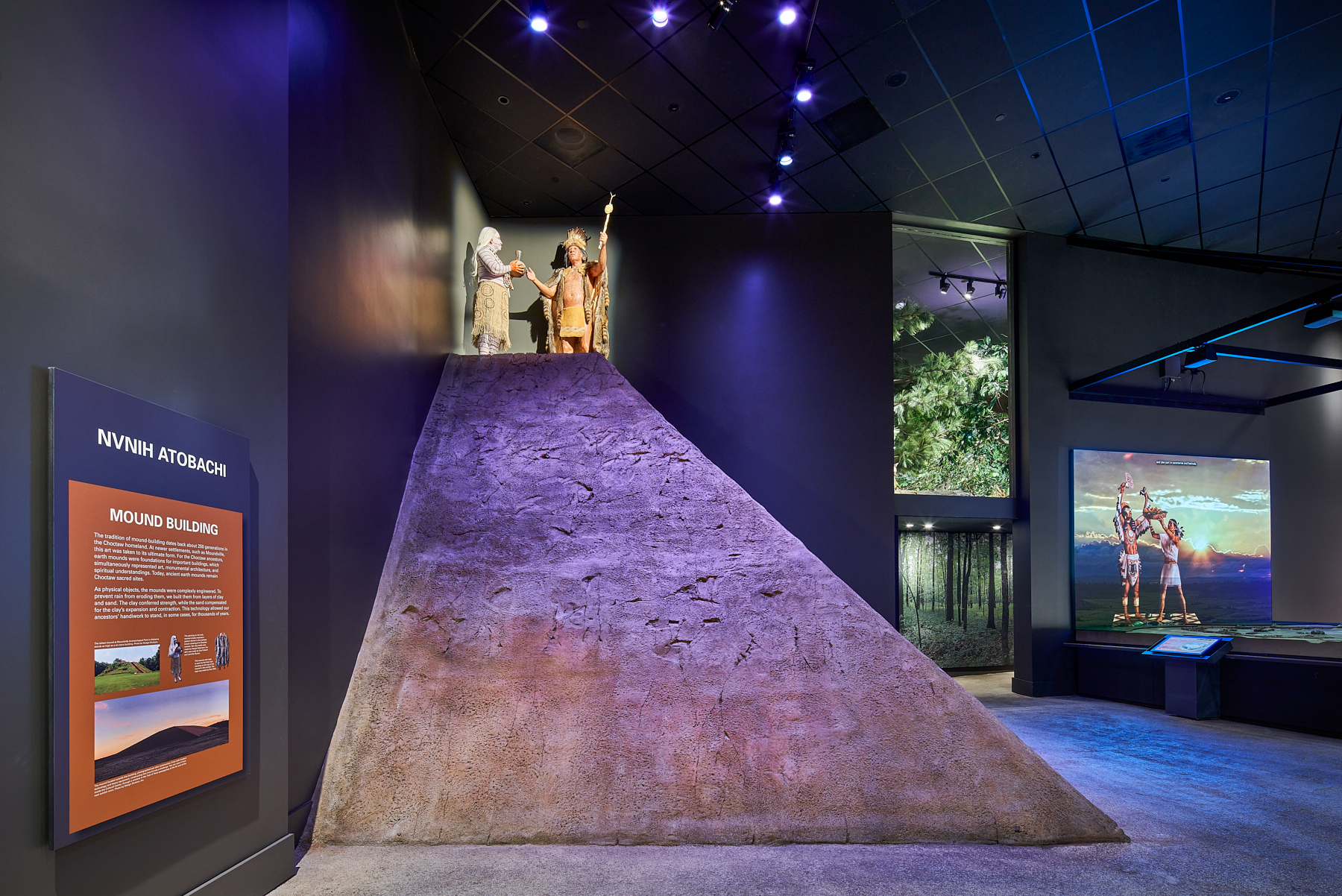Choctaw Nation Cultural Center
Durant, Oklahoma
Project Size: 60,000 square feet
Designers: Design Division Incorporated
Hertiage, Past & Present
The new Choctaw Nation Cultural Center celebrates the heritage of the Choctaw Nation, bringing its culture and history to the attention of visitors. Located in Durant, Oklahoma, this state-of-the-art Center includes two exhibit halls, an art gallery, auditorium, children’s area, classrooms, offices, and a café in the main building. The permanent exhibit hall features a four-part story focusing on the history of the Choctaw tribe. This history ranges from about 1250 to the present day. A temporary exhibit hall functions as a space for traveling exhibitions, community-curated exhibits, and other events. The Choctaw Nation Cultural Center operates for educational purposes and caters to visitors who arrive to the Center with a desire to understand Choctaw culture.
The valuable nature of Choctaw art is its ability to be both beautiful and functional, and at the Choctaw Nation Cultural Center, this duality results in an immersive interaction between visitors and Choctaw life both past and present. In order to keep the Cultural Center rooted in the traditions of the Choctaw tribe, the Choctaw Nation Cultural Services Department partnered with 42 Choctaw artisans to create authentic clothing, tools, and other items from various periods in Choctaw history to be used for exhibits and dioramas. The art of the Choctaw tribe places emphasis on the passing down of knowledge and skills from one generation to the next, so it was essential to have members of the Choctaw community be involved in making many artifacts displayed at the Center.
For this 65,000 square-foot project, kubik maltbie was responsible for the fabrication of all the galleries, including exhibits, scenic work, casework, and interpretive signage. Furniture and benches were built in shop. The team’s vision for the project centered around presenting the past history and present realities of the Choctaw community by tracing the history of the Choctaw nation. kubik maltbie built replicas of historical log cabins in a forest environment along with taxidermy animals throughout the landscape. A Trail of Tears gallery educates visitors about the forced relocation of thousands of Native Americans from the southeastern United States to areas west of the Mississippi River and how that dark period in history affected the Choctaw nation. Other subjects for exhibits include modern-day Choctaw housing, education, religion, and a stick-ball theater, their popular sport. A children’s gallery includes a replica log cabin, giant turtle, and tree house.


